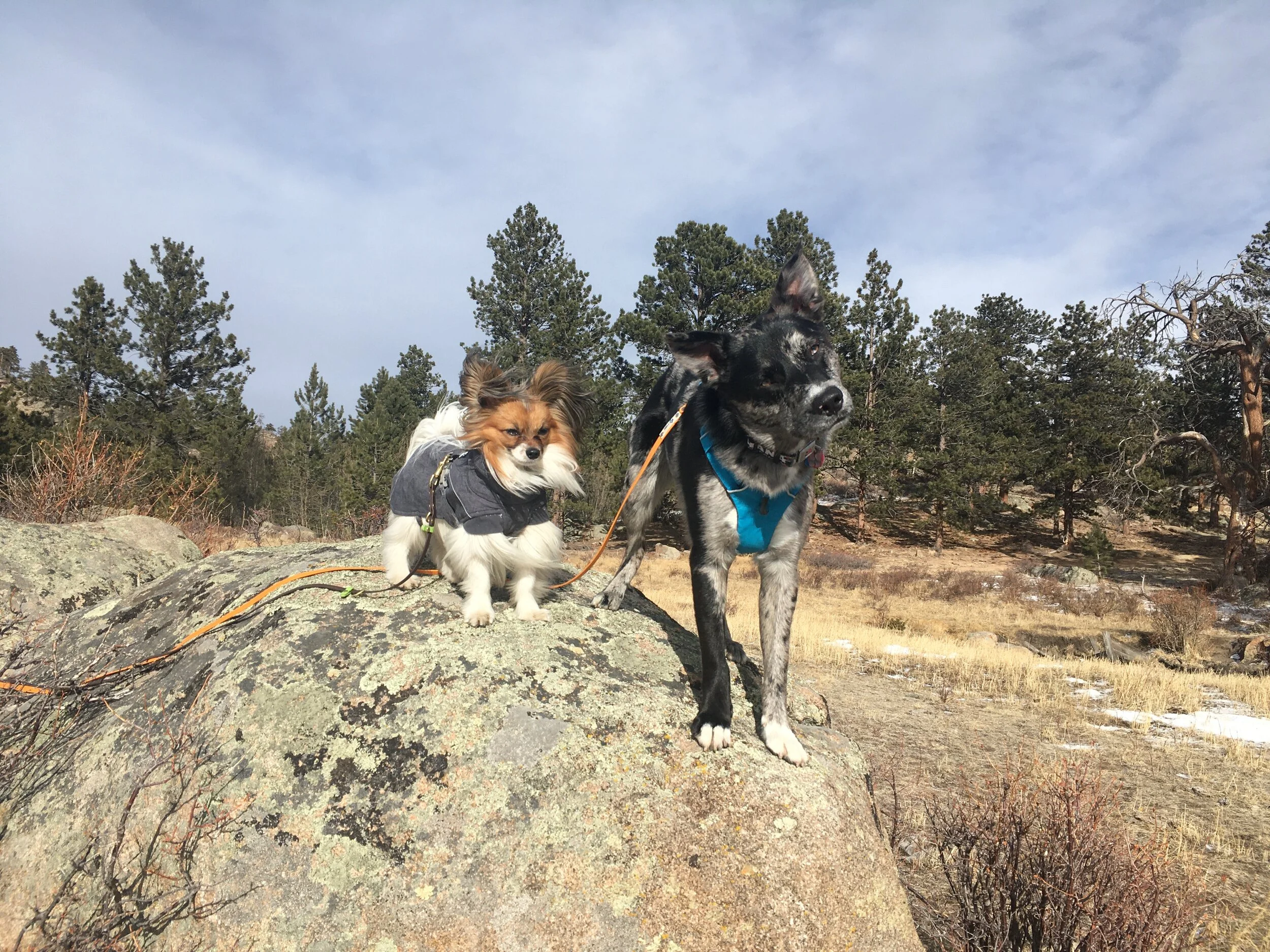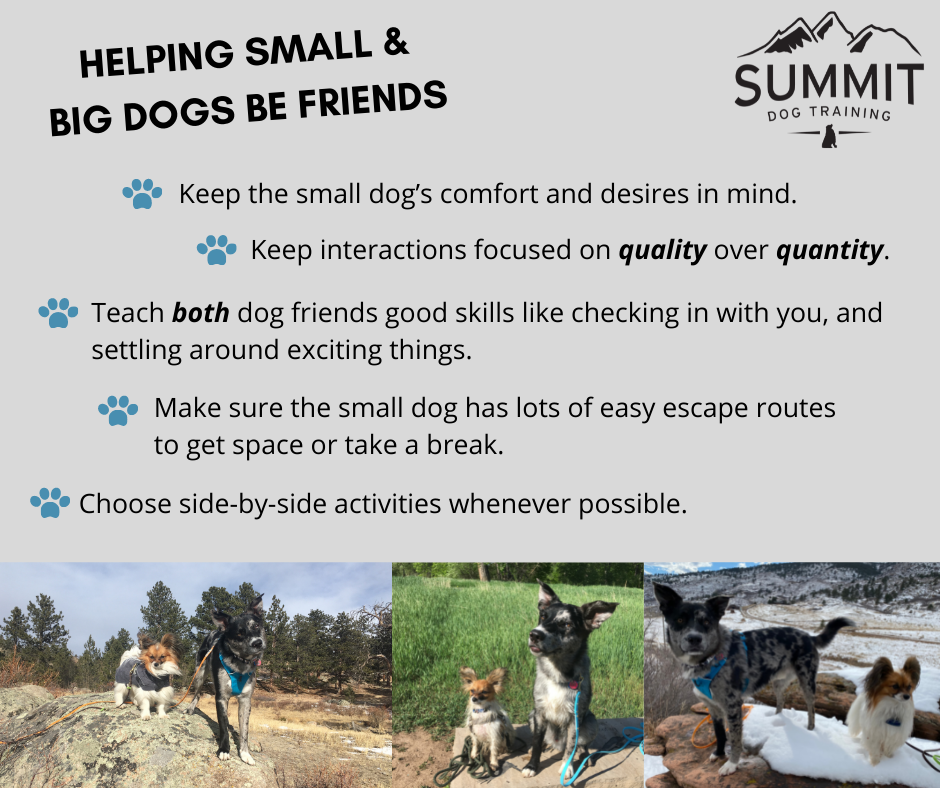While it may seem funny, small dogs and big dogs can make the best of friends! Take best friends Jamie and Pirate for example! These two learned how to be great companions who know how to play safely & kindly. Sometimes, small dogs need a couple extra breaks as well as a few safety precautions to ensure a fun time. Check out these tips on how to successfully introduce small dog and big dog friends!
1. Keep the small dog’s comfort and desires in mind. Many small dogs, especially those that are older and may not have a lot of experience being in close proximity with larger dogs, use overt communication like growling or snapping to get across their needs & wants. This is a safety feature, and something that we should respect that the small dog feels the need to do in order to feel safe in this situation. If the small dog is being pushed past their comfort level consistently, then this likely means we need to back off those interactions a bit, maybe have the large dog a bit further away on a leash or behind a baby gate, so that the small dog can start with learning that being near to the large dog is a safe and comfortable thing to do.
2. Keep interactions focused on quality over quantity. If the large dog has been self-controlled near the small dogs for a bit, it may be time to separate, give the pups a different activity to do & let both of them take a break. This is so that things stay within a productive zone and the small dog doesn’t need to demonstrate with overt behaviors that they are done with the interaction.
3. Teach the large dog that when their small dog friend might growl or snap at them, that means GREAT things happen from you across the room. This could mean a treat, special play time, you getting exciting and making a fun fuss over them, etc. If their small dog says “I need space” and the other dog immediately gets rewarded across the room from you, this will help to teach them how to listen to the small dog’s request by walking away and finding something else to do instead.
4. Teach the large dog friend good skills like checking in with you, calmly watching an exciting thing (such as a small dog friend) across the room, being calm on a leash, settle on a mat, etc. All of these skills can help a smaller dog feel safer around a large dog, and the large dog is learning to check and control some of their impulses that could be well-intentioned but physically risky for a small dog friend. If a large dog can get used to lying down near a small dog friend, this can be less overwhelming & intimidating, meaning the small dog will often feel less discomfort and less need to do those other behaviors. Teach your small dog some of these same skills as well!
5. Make sure the small dog has lots of easy escape routes. If your small dog jumping up on the sofa or into a lap should be a cue to call the large dog away and give the small dog a break. Dividing a living room space with an exercise pen so that the small dog can be on one side while the large dog hangs out on the other can be another great way to create a safe space for them to be side-by-side. During play time, having obstacles for the small dog to duck under to get out of the way from underfoot of their large dog friend can be helpful for a quick break & safety.
6. Choose side-by-side activities whenever possible instead of head-to-head activities. Things like going for a walk or hike together instead of nose-to-nose social time in the backyard can be a great way to help a small dog feel comfortable in the vicinity of a large dog, while the activity is moving both dogs forward instead of towards each other.
Follow these tips and tricks to help introduce your small dog to a new big friend, or vice versa! Remember to always start slow and work your way up to a let-loose play time. Jamie and Pirate say, “we may be different sizes, but we are the two best friends ever!”
Small dogs can be awesome adventure buddies! While much of the training for small dogs is the same as with larger breeds, there are some nuances that can make training your small dog a potential headache, or a dream!
We have a webinar replay all about training with Small Dog friends! In this webinar, Summit Head Trainer Amber shares lots of the tricks of the small dog training game that she has been using to raise Jameson, her little Papillon. This includes reinforcement strategies for small bellies, why small dogs do what they do, how to help our small dogs think on their own four feet, safety skills & considerations, adventure skills for small dogs, and how to create safe and positive relationships. Check out the replay here!



